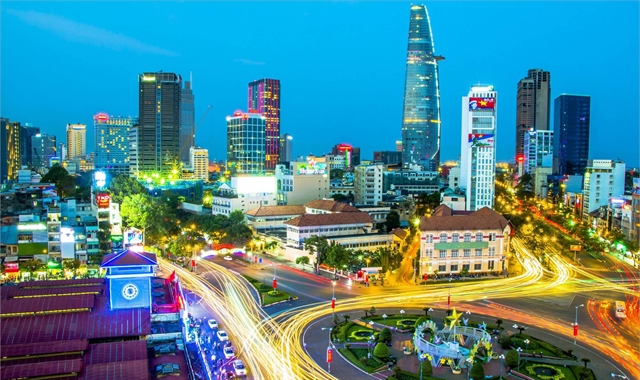Việt Nam is likely to lead the region with a growth rate of 6.6 per cent in 2025 – the highest among developing economies, according to the World Bank (WB) East Asia and Pacific Economic Update.

HÀ NỘI — Việt Nam is projected to lead the region with a growth rate of 6.6 per cent in 2025 – the highest among developing economies – according to the World Bank East Asia and Pacific Economic Update, October 2025 edition, which forecasts regional growth of 4.8 per cent, down slightly from 5 per cent in 2024.
The World Bank noted a striking paradox in the region’s inclusive development model: relatively strong growth paired with a shortage of quality employment. Most new jobs have been created in low-productivity informal service sectors, while young workers continue to face challenges entering the labour market and female participation remains low.
Although retail sales have increased and industrial production remains on an upward trend, consumer and business confidence have not fully recovered from the COVID-19 pandemic. Exports are showing signs of acceleration as companies anticipate adjustments to United States tariffs, but new orders are slowing. The World Bank projects that regional growth will ease further to 4.3 per cent in 2026, reflecting the effects of trade barriers, geopolitical uncertainty and continued reliance on fiscal stimulus rather than deeper structural reforms.
Despite the slowdown, the report regards East Asia – including Southeast Asia – and the Pacific as 'a bright spot in the global economic landscape; thanks to strong resilience and ample reform potential. However, it stresses that the region needs 'a new wave of reforms' focused on boosting labour productivity and creating higher-quality jobs to sustain growth.
Việt Nam
Amid a volatile regional landscape, Việt Nam stands out for its stability and strong recovery in manufacturing and domestic consumption. The World Bank praised Việt Nam’s sound policy management in maintaining macroeconomic stability, controlling inflation and supporting enterprise recovery post-pandemic.
At a press briefing on October 7, Aaditya Mattoo, World Bank Chief Economist for East Asia and the Pacific, noted that about 80 per cent of new jobs in Việt Nam are created by dynamic young enterprises – a positive sign of private sector vitality. However, he observed that the share of young firms in the overall business landscape has been declining in recent years, reflecting structural and regulatory challenges.
The East Asia and Pacific Economic Update also highlights the impact of new United States tariff policies, affecting trade in many export-dependent economies across the region.
Mattoo said: “Rather than viewing themselves as victims of external volatility, East Asian economies should proactively build domestic growth engines through reform and deeper integration.”
He added that regional economies must move beyond short-term stimulus measures and prioritise long-term structural reforms – such as improving education quality, streamlining business procedures and enhancing the efficiency of public investment.
“A virtuous cycle between opportunity and capability will generate better jobs and drive stronger growth,” he said.
For Việt Nam, the key lies not only in expanding export markets but also in strengthening domestic demand and increasing product value. Accelerating digital transformation, improving governance and fostering innovation in the private sector will underpin the next growth phase.
Productivity improvement remains the cornerstone for shifting to a higher-quality growth model, where value-added industries play a leading role.
Institutional reform, innovation promotion and workforce upskilling will enable Việt Nam not only to maintain high growth rates but also to enhance growth quality, moving towards more inclusive and sustainable development. — VNS





